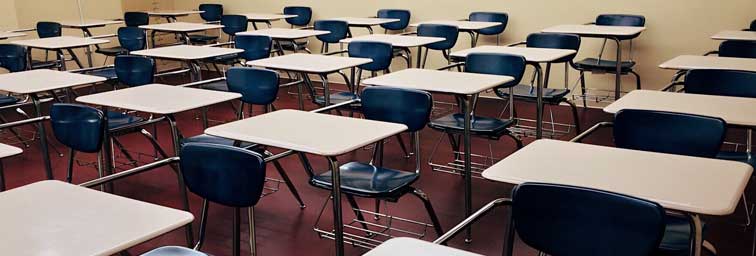
The Impact of Immigrant Children on America’s Public Schools
- Christopher Daly
- March 6, 2018
- Forum Papers
- Forum Paper
- 0 Comments
Click here for a downloadable, printable PDF version
THE IMPACT OF IMMIGRANT CHILDREN ON AMERICA’S PUBLIC SCHOOLS
All Students Lose in Overcrowded Classrooms Taught by Overworked Teachers
An NPG Forum Paper
by Christopher J. Daly
OVERVIEW
As a nation we have witnessed outrage after outrage during the past 15-20 years as our once-workable immigration system has fallen apart.
Today’s headlines constantly carry reports on the ongoing problems related to the estimated 12 million+ illegal immigrants living in the United States. The list includes better protecting our nation’s southern border, soaring costs of billion dollar entitlement programs, increasing pressure to grant citizenship to undocumented residents, and the criminal consequences of more and more states, cities, and other government entities adopting “sanctuary” policies.
What is not traditionally in the news, is that the breakdown of our nation’s immigration laws and policies has put a huge strain on America’s educational system — especially grades K thru 12.
The problem can be summed up by stating that from big cities to small towns, immigration overload has adversely impacted the carrying capacity of many schools. This reality means that countless young people, both natives and new immigrants, are paying for Washington’s failure to get the immigration problem under control. All of this has occurred with little national debate over the ability of our schools to educate and integrate hundreds of thousands of new students into our society.
What’s desperately needed is a drastic reduction in immigration rates to a truly sustainable level in order to protect our nation’s many resources for generations to come. Our educational system is greatly affected by continued high rates of immigration and needs to be part of the national debate regarding realistic immigration reform.
Can such a goal be achieved? The answer to that question is very elusive. And it will take a new priority commitment from our nation’s leaders to make it a reality. If we can get our country’s immigration system back on a responsible and workable track, the reward will be far less overcrowded schools, far fewer overburdened teachers, a less stressful learning environment for students, and greater educational accomplishments across the board.
IMMIGRANTS IN AMERICA’S SCHOOLS
The United States has a proud and positive history of accepting immigrants. In the early days of our country, the arrival of new people from diverse sections of the world was greatly welcomed by a nation eager to grow and expand. The ever-increasing number of immigrants from Europe that arrived on our shores in the late nineteenth and early twentieth centuries originally posed problems for many major cities that grew to accommodate them. However, as newcomers moved quickly into brand-new cities and towns in the mid-west and far west,
they also quickly assimilated. In essence, America’s position as a “land of opportunity” enabled waves of immigrant families to adapt to America’s immigration-rich culture. One of the most valuable new opportunities provided to them was a chance for their children to gain a solid education. […]
Continue reading the full Forum paper by clicking here.
Christopher J. Daly, president of Campac, Inc., is a dedicated writer and researcher with more than 15 years under his belt writing for Negative Population Growth on population and immigration issues. He has spent more than four decades in Washington, D.C., where he has moved from working on Capitol Hill to serving as a consultant for some of the largest and most influential organizations in the nation. Highly respected in his field, Chris takes pride in his ability to grasp the challenges presented by major issues, advance creative ideas, and present problems and solutions in plain – non-bureaucratic – language that can rally the American people to find responsible solutions.
